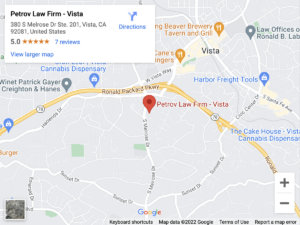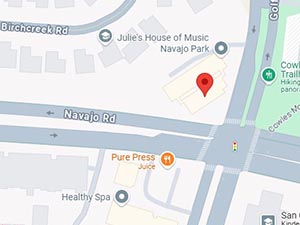
No two personal injury cases are exactly the same. Nevertheless, most of them do share certain features in common. This reality allows for the formation of a general timeline that can help you understand how personal injury cases proceed.
At the Scene of the Accident
Take the following actions at the scene of the accident and immediately afterward, to the extent that your injuries allow you to do so:
- In a car accident, move vehicles out of the road for safety.
- Call emergency services, meaning an ambulance and the police.
- Do not apologize or admit fault;
- Cooperate with the police;
- Photograph anything that might be relevant – even the sky, if the weather might be relevant.
- Get insurance details of anyone whose insurance you might need;
- Get contact details for any witnesses;
- Report the accident to a supervisor or other necessary party; and
- Contact a personal injury lawyer.
Prioritize safety, however, and quick medical treatment. Everything else can wait if it has to.
Medical Treatment

Do not delay medical treatment. This could put both your health and your legal claim at risk. Seek treatment if you suffered any impact at all, even if you don’t think you’re injured. Some injuries take time to generate symptoms. Seek treatment at a reputable hospital, and keep copies of all documents the hospital gives you.
The Initial Consultation
Schedule an initial consultation with a reputable personal injury lawyer. Confirm that the lawyer operates on a contingency fee system, where your legal fee equals a percentage of whatever the lawyer recovers for you. Contingency fees typically amount to 30% to 40% of your total recovery, either in court or at the settlement table.
You should leave the consultation with a general idea of what your chances are and how much your claim might be worth.
Preliminary Investigation
The purpose of the preliminary investigation is to gather evidence for use in negotiations and, if necessary, litigation. Your lawyer should take the following steps:
- Request case documentation from you and third parties (medical records, police reports, photographs of the scene of the accident, interviews with witnesses, and more.);
- Apply the facts of your case to California personal injury law to come to some preliminary conclusions about your claim; and
- Contact potential expert witnesses if necessary, interview them, and have them generate written reports to the extent necessary.
These are likely to constitute only a few of the steps that your lawyer will need to take in the early stages of your case.
The Demand Package
Your lawyer should draft a demand letter addressed to whichever party is responsible for paying your claim (usually an insurance company). The demand letter should notify the recipient of your claim and justify it using reason and evidence.
A full demand package should include the demand letter plus supporting documents, such as copies of your medical records. If the recipient is an insurance company, they will respond with a routine “reservation of rights” letter.
Negotiation
Most lawyers like to let the opposing party make the first concrete settlement offer, if possible. This offer will certainly be a ‘lowball’ offer that is only a small fraction of the actual value of your claim. Your lawyer should respond with a counterclaim that is much higher.
From there on out, it is likely that your lawyer and the opposing party will engage in a ping-pong game of offer and counteroffer until neither party is willing to compromise any further. At that point, you might want to consider filing a lawsuit. Remember, you can always withdraw the lawsuit later on in exchange for an adequate settlement.
Filing a Personal Injury Lawsuit in San Diego County
At this point, you have a personal injury claim, not a lawsuit. Where do you file your personal injury lawsuit? You can file it in the court with jurisdiction over the zip code where the accident occurred, the defendant’s domicile, your domicile, your place of business, or the defendant’s place of business.
Since Vista, California is part of San Diego County, if your claim arose in the area, you should file your personal injury lawsuit with the Civil Division of the Superior Court of California for the County of San Diego. There are a few exceptions to this rule—speak to your lawyer for details.
Small Claims Court
You can use small claims court if your claim’s value doesn’t exceed $10,000 ($7,500 for a car accident with an insured defendant). Either way, to get your lawsuit started, your lawyer will need to take the following steps:
- Prepare a complaint, which is the document that explains your claim to the court.
- Prepare a summons, which is the document that notifies the defendant of the lawsuit and their need to respond to it by a certain date.
- Submit a copy of the summons and the complaint to the clerk of the appropriate court within the statute of limitations deadline (typically no later than two years after the date of the accident).
- Arrange for a neutral third party, over 18 years old, to serve copies of the summons and the complaint on the defendant within 60 days of the date that you filed your papers with the court. You can use a registered process server if you want to.
- File a Proof of Service and a copy of the original summons with the appropriate court after the defendant has been served.
Consult your lawyer if you require further details.
The Discovery Process
The discovery process is a court-enforced process where each party demands evidence that is in the possession of the other party. The four legal weapons you will use are:
- Depositions: Out-of-court testimony.
- Interrogatories: Written questions that the recipient must answer under oath.
- Demands for production: Demands for access to documents and physical evidence.
- Requests for admissions of facts that you don’t want to bother proving in court: “You were driving the car the night of the accident,” for example.
You must file a lawsuit before you can gain access to the discovery process. Remember, the defendant has access to all of the same legal weapons that you do.
Mediation
If you are willing to mediate your claim, Small Claims Mediation Services are available free of charge.
Trial
A trial involves several stages:
- Voir dire: A competitive process of jury selection.
- Opening statements by each side’s lawyers (“What we intend to prove…”).
- Examination and cross-examination of witnesses. You will also introduce evidence through questioning witnesses (“Is this your signature at the bottom of this waiver?”);
- Closing statements: Each party’s lawyer will rest their case by stating the evidence they introduced and what they think it proves.
- Jury instructions: The judge will instruct the jury on how to apply the law to the facts.
- The jury verdict, which determines who wins and who loses the case.
It is very unlikely that your case will ever go to trial. Parties settle almost all claims, even after a lawsuit is filed.
The Sooner You Involve a Vista Personal Injury Lawyer, the Better Your Chances Will Be
Will you win your personal injury case? Even if you “win,” how much did you win? Are you sure you understand how much your claim is actually worth?
A qualified Vista personal injury lawyer can help you with all of these questions and more. Almost any personal injury lawyer will be happy to speak with you about your case without charging you a dime upfront. Contact Petrov Personal Injury Lawyers today at (619) 344-0360 to schedule a free consultation.


